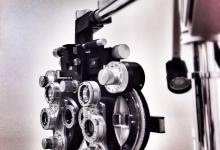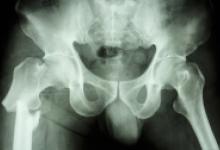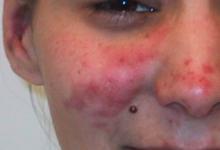Imaging-Only Diagnosis of Giant Cell Arteritis Is Feasible Save

Positive findings with color Doppler ultrasound were enough to diagnose giant cell arteritis (GCA) accurately without need for confirmation with temporal artery biopsy (TAB), a prospective study indicated.
Out of 165 older patients in whom GCA was strongly suspected, 73 (44%) had the telltale "halo" sign on temporal artery ultrasound; and of those, the GCA diagnosis was unchanged when re-examined 2 years later, according to Guillaume Denis, MD, of Centre Hospitalier Rochefort in France, and colleagues.
The 92 patients with negative ultrasound results then underwent TAB, which was positive in 28 (30%), the researchers reported in Annals of Internal Medicine. They, too, kept the GCA diagnosis through 2 years of follow-up.
Meanwhile, about half of the 64 TAB-negative patients were diagnosed with GCA anyway through large-vessel imaging and clinical judgment, none of whom later received a different diagnosis. That left 29 for whom physicians identified another cause for the patients' symptoms, such as polymyalgia rheumatica; one of these patients was later determined to have GCA.
"In summary, our study showed that the use of temporal artery ultrasound may be an efficient way to make the diagnosis of GCA in patients with high clinical suspicion and to reduce imaging costs and the need for biopsy, thereby limiting complications and the need for a surgeon," Denis and colleagues wrote.
But whether ultrasound is accurate enough to diagnose GCA in patients whose initial presentation is less clear-cut remains to be seen, the researchers cautioned. Patients in their study were required to have elevated C-reactive protein levels and clinical signs that are relatively specific for GCA, such as scalp hyperesthesia or jaw claudication, or else either general symptoms without a likely alternative cause (e.g., unusual headache) or angiography-detected vasculitis in large vessels.
Ultrasound is already an accepted diagnostic tool in GCA, backed by recent guidelines from major rheumatology organizations as a first imaging approach. But whether it can be used by itself without confirmation by TAB or other methods was not so clear.
"Suspicion of GCA should be treated as a medical emergency, given the risk for blindness and the potential adverse effects of corticosteroids," Denis and colleagues explained. "This is why a rapid and effective diagnostic strategy is needed."
TAB doesn't really fill the bill, the researchers argued, because it requires a surgeon's involvement followed by pathologic examination. Moreover, TAB comes with potential adverse effects such as pain and nerve palsy.
Patients in the new study were recruited from six French hospitals during 2016-2020. Color Doppler ultrasound was performed in each case within a week of starting empirical corticosteroid treatment, to be followed by other diagnostic methods only when ultrasound results did not confirm the initial GCA suspicion. Patients were then to undergo repeat examinations at months 3, 6, 12, and 24 after diagnosis. Ten patients diagnosed with GCA based on positive ultrasound findings did not complete the 2-year follow-up, as did 10 of those with negative ultrasound results.
Median patient age was 79, and 62% were women. Some three-quarters had unusual headache, and most also had at least one GCA-specific symptom. Nearly 90% were hospital inpatients during their initial examinations.
Limitations to the study included the relatively small patient sample and lack of central diagnostic adjudication (diagnoses were made independently at participating hospitals). Also, techniques for conducting color Doppler ultrasound have evolved somewhat since the initial scans were performed, which might now lead to different results and interpretations.
Source Reference:Denis G, et al "Diagnostic strategy using color Doppler ultrasound of temporal arteries in patients with high clinical suspicion of giant cell arteritis: a prospective cohort study" Ann Intern Med 2024; DOI: 10.7326/M23-3417.






If you are a health practitioner, you may Login/Register to comment.
Due to the nature of these comment forums, only health practitioners are allowed to comment at this time.